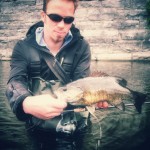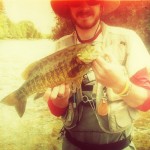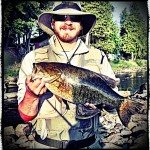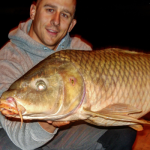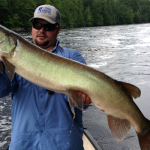By Robert Conley & Robert Fuchs
As the alarm sounds you will always laugh to yourself at its irrelevance, you have been lying there with your eyes open counting down the minutes. Is it the part of your brain that is instinctively waiting for the sound? Is it the anxiety that you didn’t pack everything you needed to bring? Or is it the anticipation of that first blow up? The first reel scream? Or that new PB at the end of your line? We will never know the answer to this but the sunrise fisherman can relate and share this undeniable understanding of all of the above.
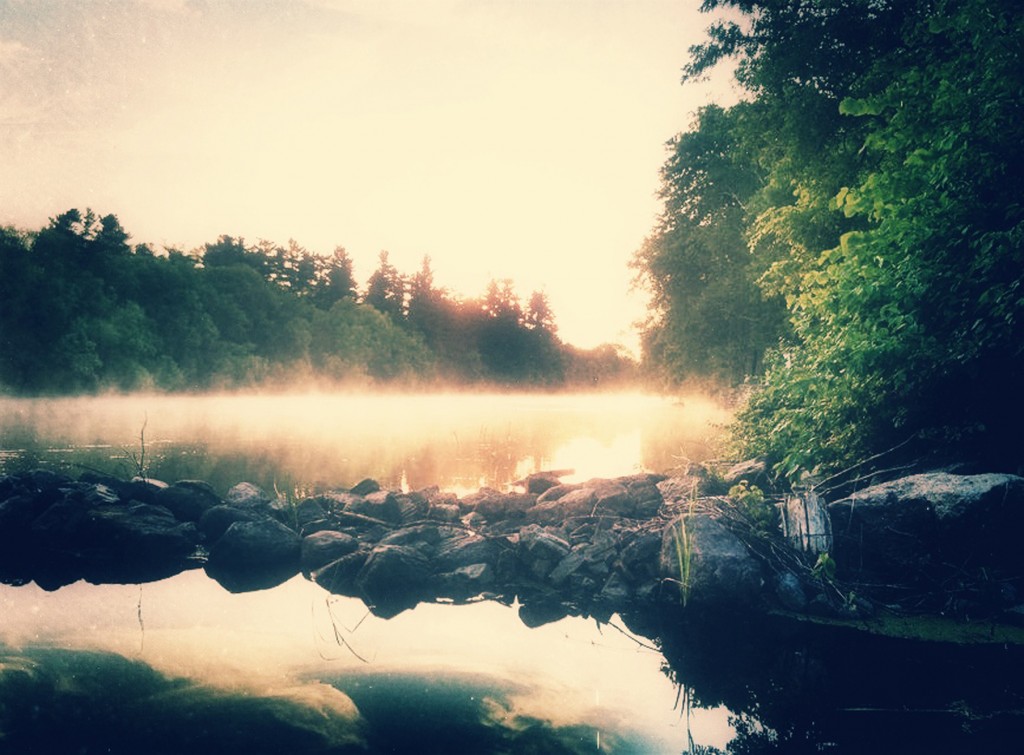
Most think we are crazy, but to us, we wouldn’t think of doing it any other way. Equipped as light weight as possible; a good pair of waders, polarized shades, a small bag for our favorite tackle and a waterproof camera, bare to the bone, ready to go.
Your silent arrival on the water is only interrupted by the intoxicating sounds of nature, birds chirping, water running, wildlife rummaging through the shoreline foliage. This is what we have been waiting for. Looking down at your tackle bag what are you going to use to put this silence to rest and make the waters explode with your first beastly river smallmouth?
Our go to for option for the first cast on a sun kissed morning river is without a doubt a popper. This old classic is loaded with confidence. It is never a surprise when the biggest bronze back of the morning comes from those first few casts. Targeting those river edges, sand/rock humps, boulders, deep pools or any random out of place structure. Making continuous noise allowing your bait to pause in between pops until the ripples disappear and you will not be disappointed. This bite is fast, vicious and heart stopping, it will stir up the perfect feeding frenzy for your next tactic.
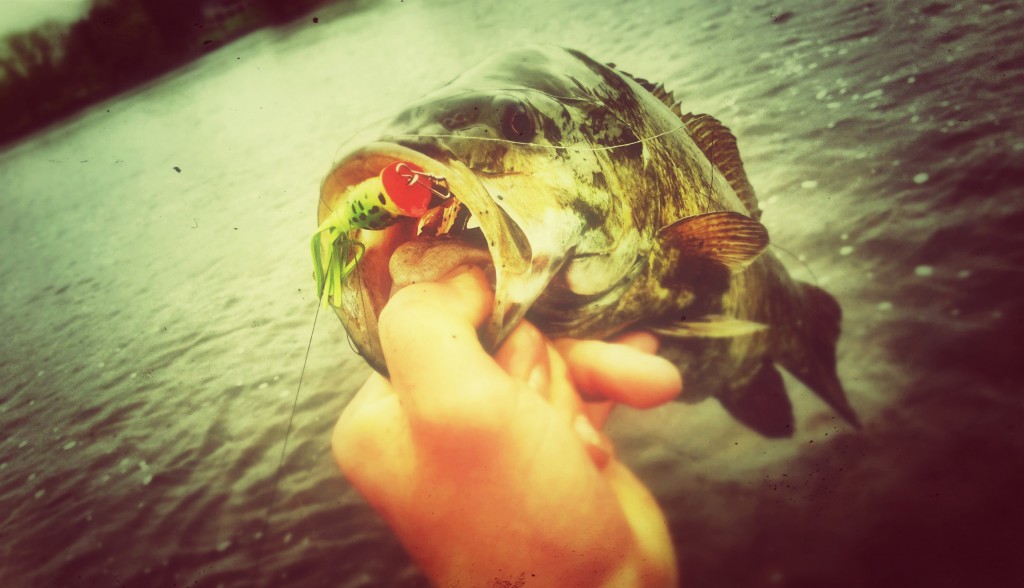
Bass in general will soon get tired of all the surface noise, what do you grab next once the popper bite has stopped? Shallow running cranks – bait fish imitation is the key in this choice. But hold on before you are moving to your next spot. Just because the top water bite has seized, it doesn’t mean you have played this spot to its full potential.
This exact same location will likely hold a lot more fish, allow your crank to pause after impact and retrieve it through the mid to higher water column. Your speeds will vary so mix it up and throw in the odd twitch before each pause. By using this approach after the popper, it will entice those strikes from fish that were too shy or too annoyed to hit the surface lure or even those that wanted to chase their breakfast. Either/or the crank will continue to pick up fish as long as they are still feeding.
When the water warms up and the sun gets higher, the late morning to early afternoon bite can be the hardest time of day to find quality fish. On a lake or a deep river you will hear those with boats “going deep” to find these fish. On the low lying rivers you don’t have that same luxury, the fish are still there but you have to find what will coax them into biting.
Again looking at your tackle bag wondering. What now? Mid day when the sun is up high the fish will lay low, still feeding but towards the bottom, picking up crayfish and small insects from the rocks. This is the time when finesse soft plastics come in to play. A grub or craw on an octopus style hook with a small split shot or a simple drop shot is the most deadly presentation
when the fish are lazily hanging during the day.
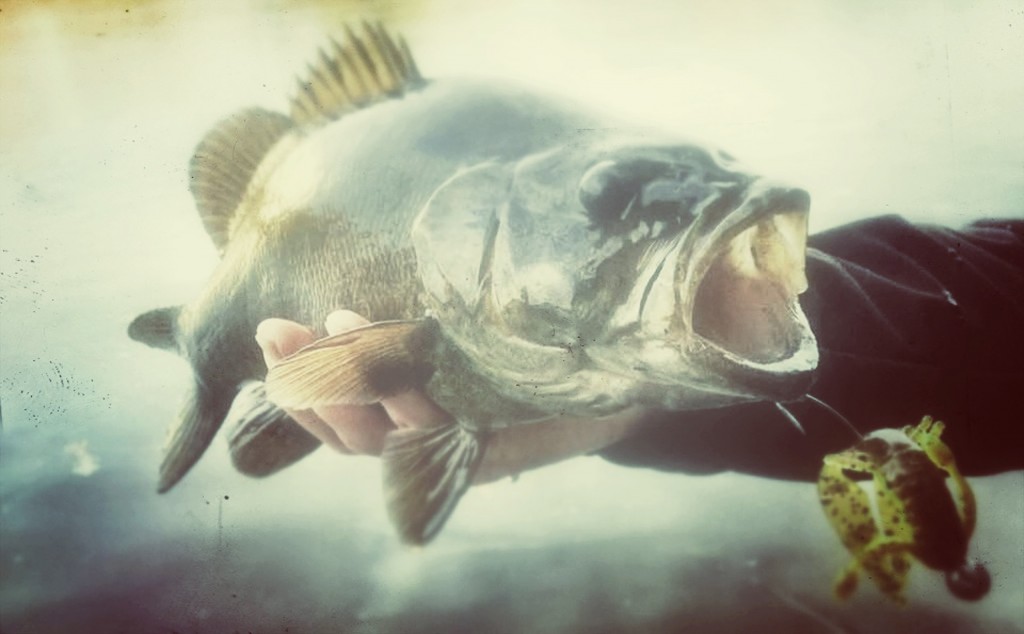
Equipped with laser sharp KAMAKAZI hooks and a fresh pack of our PowerTeam Lures we tackle the hardest part of the day. Both techniques are quite similar in build and presentation, in the end they will both result in the same fate – reactionary, pure instinct strikes.
Tying up a drop shot with a size 1 circle hook, 3″ hammer shad and allowing the weight to keep constant contact with the ground will allow the bait to do all the work; swaying in the current, tantalizingly moving and dipping like an injured bait fish, bouncing through the deeper pockets, it will drive even the laziest smallmouth nuts.
Unlike the previous two techniques this strike will be softer and quicker, so really use your senses to anticipate the right moment to set that hook.
A similar approach during those dog hours is rigging a 3.5″ Craw D’oeuvre or any other crayfish imitation soft plastic on a large octopus style hook, weighted down with a small split-shot or bell sinker.
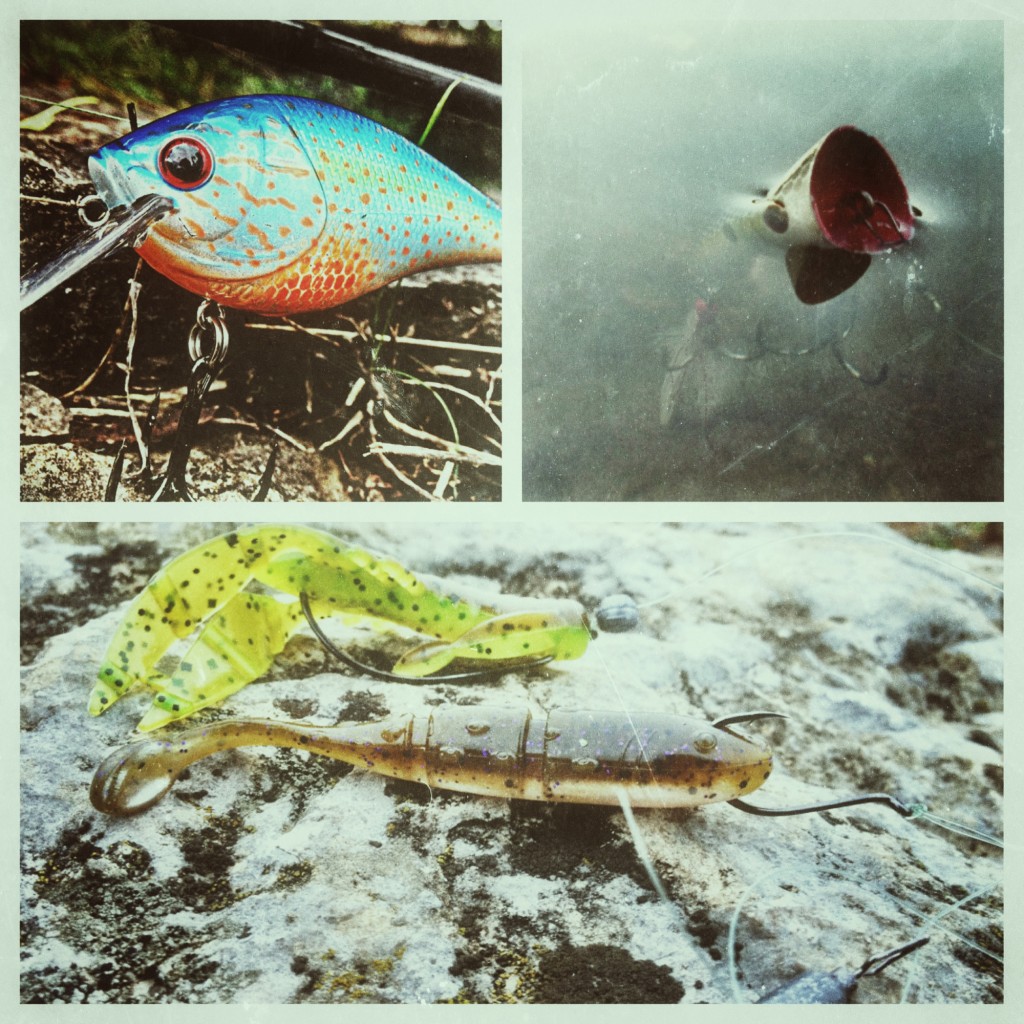
Every river we fish here has an abundance of crayfish and this is the smallies preferred meal anytime of the day, you are purely going to become the crayfish. Find rock beds and realize you may not see the big fish but they are there! Numerous times in the past we have walked up onto a large boulder and spooked the biggest fish of the day out from behind, in the most unappealing waters. So you must learn from this and don’t hesitate to hit every exposed flat, boulder, log, mat of grass, etc. During the warmest part of the day the beasts are in the shadows finding cover and shade in virtually any structure. With this presentation you want to slow down, allowing the bait to sit on the ground for what may feel like forever but a quick twitch will turn on any bass. You want them to almost forget it was splashed in above them and that it is a crayfish trying to escape, skipping and bouncing off anything you can with small pauses between each run. These strikes are very aggressive and you can usually see the football shaped shadow moving in before the twitch – set the hook and get ready for a show. A resting bass has a lot of build up energy and can give you the best acrobatics of the day. Remember the afternoon bite with the high sun will turn into a sight fishing adventure. Be aware of everything going on around you, you never know when and where the next beast will hide and strike.
The last phase of the day will sneak up on you and unfortunately this one has a fast closing window of opportunity. You have thrown everything you have in your bag at them throughout the day… What do you turn to now?
The late afternoon/early evening is the best time of day for reflection, realizing and focusing on the patterns you established throughout the day can help you produce your biggest smallmouth. Go back to what has worked before, if your crayfish presentation was on fire continue on with that, if the drop shot was dialing them in continue on with that and if the crank was what turned them on then get back to that. The fish will progressively get more aggressive as the evening moves forward. Use the knowledge you have gained all day to maximize on the spots that you were finding fish before and eliminate those areas that were less fruitful. You are your best teacher at this point and we always draw up a quick plan of attack on how to be successful as we are heading off the water.
Take the time to enjoy these last couple of hours, these are the unforgettable days we dream of as anglers when we are stuck at work and if done right you can embark on an adventure that will produce quality and quantity all day long. The thing we most want you to take away from our approach of a full day on the water is to be versatile! You will learn your own water systems and create your own perfect recipe to tackle a full day but if you are looking for a starting point this is how the Bassassins keep producing even during the hardest hours. As fishermen that strive to make the most of our time on the water, we don’t have the pleasure of getting out every day so knowing how to take advantage of your days off and maximize on every hour is very important. Get the best from the most and the most from the rest. We hope the next time you pack up your gear, head out onto the water and reach into that tackle bag, a few of these suggestions will help you turn a good day in to an amazing day that you won’t forget any time soon.
If you are seeing our work for the first time we are Rob Fuchs (Basstard) and Rob Conley (Smooth). Two best buds from Ottawa, Ontario that spend every free moment on the water all year long. Whether it’s wading the rivers or braving the ice, we always stay passionate and dedicated in pursuit of the biggest and meanest Ontario has to offer. To follow our adventures or see more of our work please check out www.thebassassins.com or www.facebook.com/TheBassassins.



